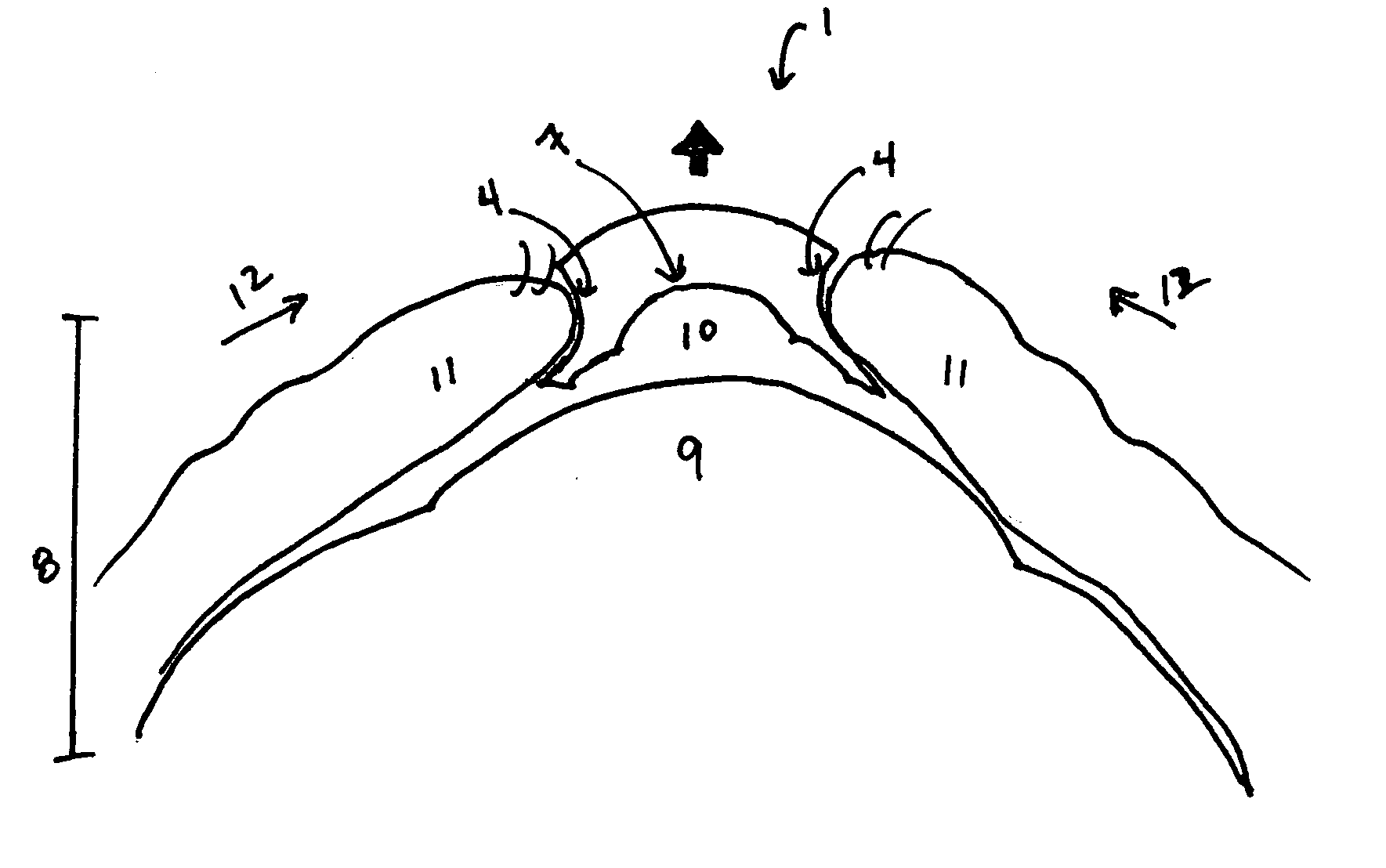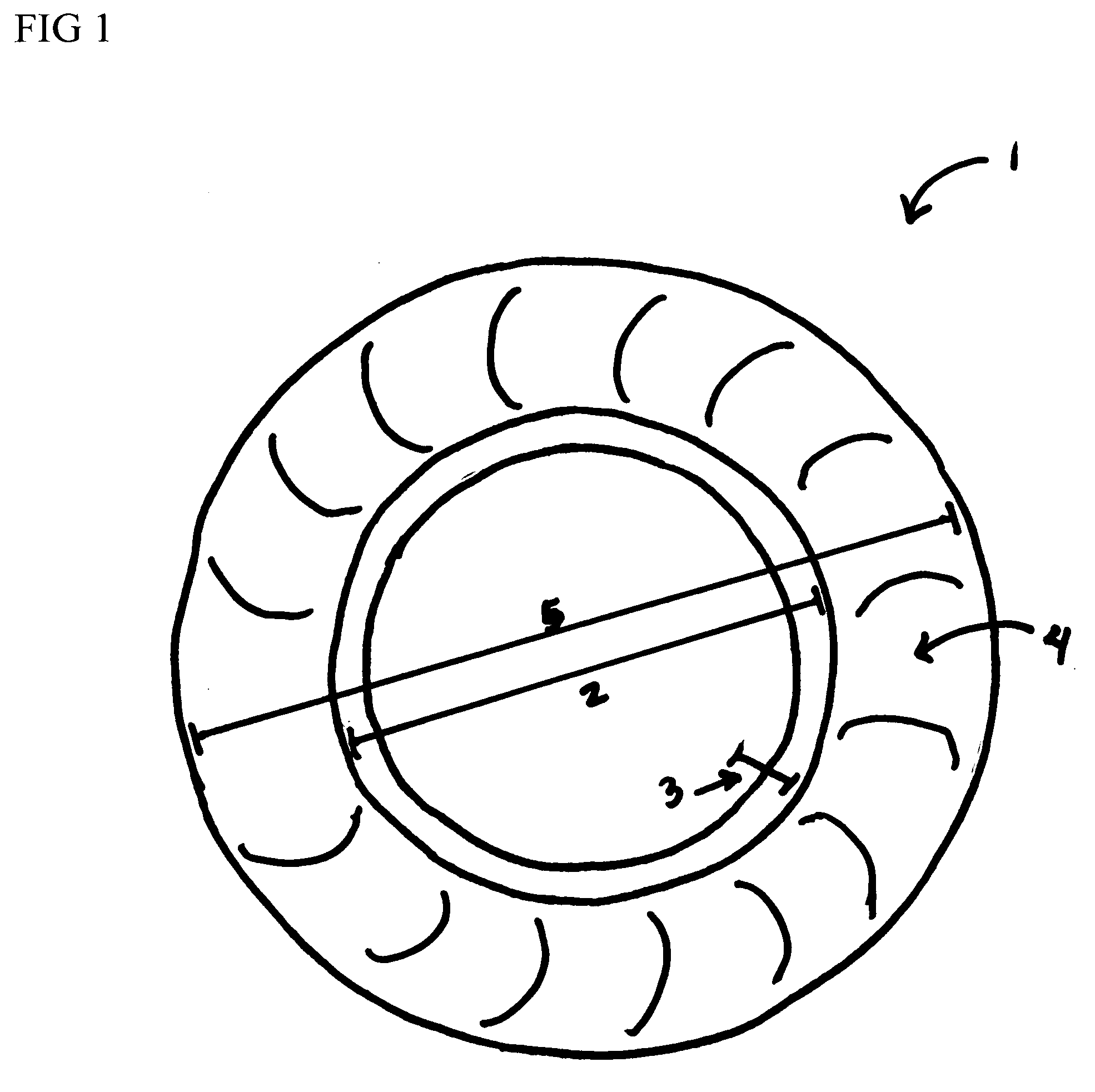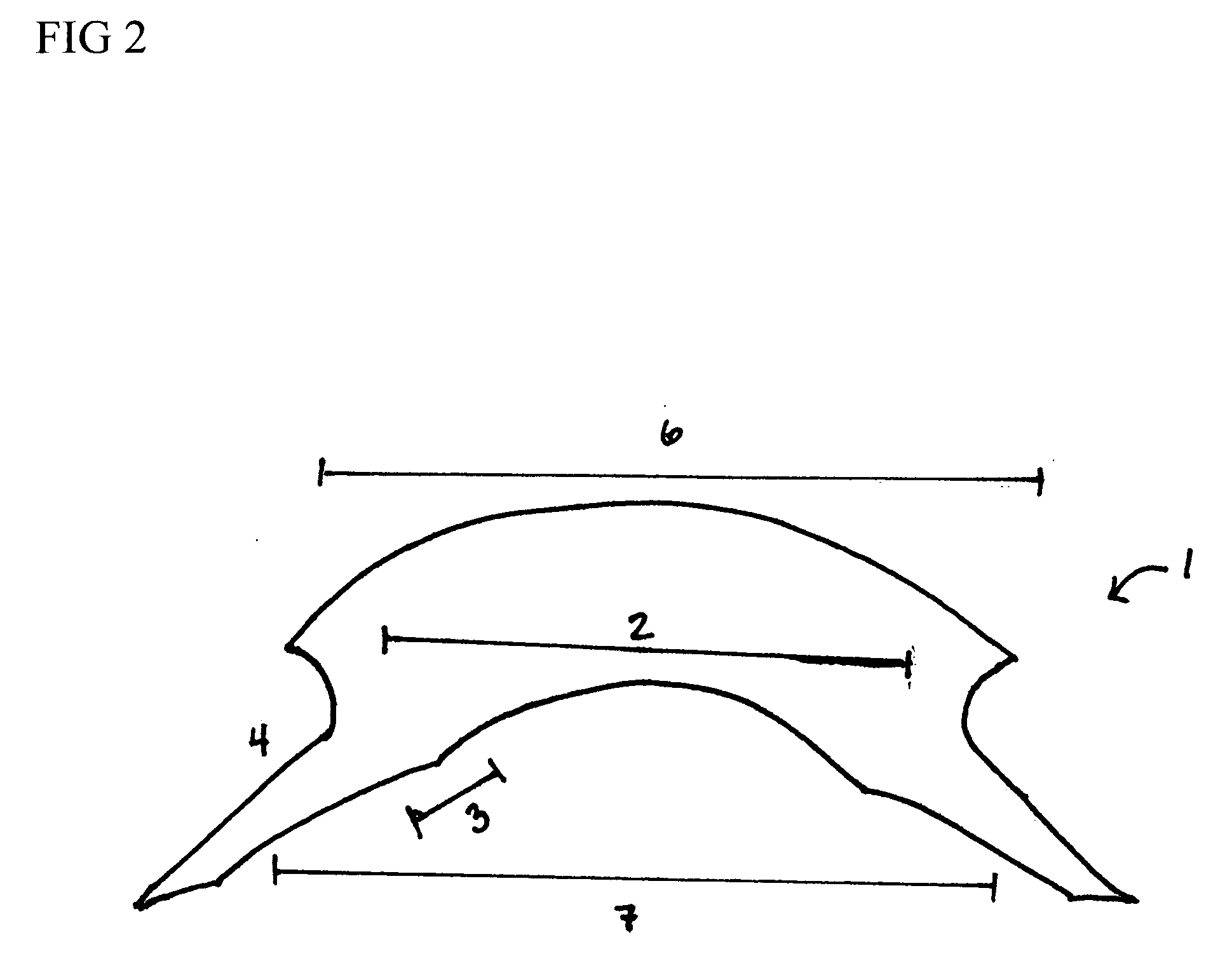Accommodating or focusable contact lens
a contact lens and amplitude technology, applied in the field of contact lenses, can solve the problems of affecting the vision of patients with presbyopia, and unable to provide adequate accommodative amplitude to the presbyopic eye, and achieve the effect of improving the power of the eye and clear vision
- Summary
- Abstract
- Description
- Claims
- Application Information
AI Technical Summary
Benefits of technology
Problems solved by technology
Method used
Image
Examples
Embodiment Construction
[0026]In the following detailed description, because other sequences are possible, the present invention should not be limited to the illustrated embodiments.
[0027]FIGS. 1 and 2 illustrate one embodiment of the accommodating or focusable contact lens (henceforth to be abbreviated as acl) model one 1. The ad is an all rigid gas permeable contact lens unit (e.g. no separate pieces or junctions as with hybrid models and all of a similar material) with a standard solid central region 2 containing the optic zone and junction with the mid-peripheral zone 3; and a thinner and excavated, concave mid peripheral region in the mid to peripheral area of the lens 4 running the entire circular perimeter of the lens on the anterior side of the lens 6. The diameter 5 of the acl 1 will be dependent on the proper fit on the individual patient's eye, but will generally be as large as, although slightly smaller, as the diameter of the entire anterior cornea 9. The thickness of the lens is fairly unifor...
PUM
 Login to View More
Login to View More Abstract
Description
Claims
Application Information
 Login to View More
Login to View More - R&D
- Intellectual Property
- Life Sciences
- Materials
- Tech Scout
- Unparalleled Data Quality
- Higher Quality Content
- 60% Fewer Hallucinations
Browse by: Latest US Patents, China's latest patents, Technical Efficacy Thesaurus, Application Domain, Technology Topic, Popular Technical Reports.
© 2025 PatSnap. All rights reserved.Legal|Privacy policy|Modern Slavery Act Transparency Statement|Sitemap|About US| Contact US: help@patsnap.com



